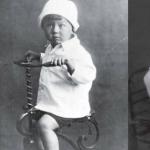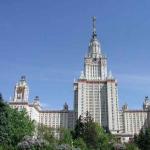

On September 16, 2018, parishioners of our church made a pilgrimage to the village. Akatovo, Klinsky district, to the Holy Trinity Alexander Nevsky Stavropegic Convent. The monastery was built in the 19th century by former serfs in gratitude to Alexander II the Liberator for the abolition of serfdom. After the revolution of 1917 first the NKVD sanatorium was located in the monastery, then a pioneer camp, then it remained in the abomination of desolation. In 1938, several sisters of this monastery were shot at the Butovo training ground, three of them - Anastasia, Alexandra and Catherine - were later canonized as Holy New Martyrs of Russia.
By the grace of God in 2000 By decree of Patriarch Alexy II, the Patriarchal Metochion was established here. The painting of the temple was carried out by the sisters themselves under the guidance of the already deceased rector of the temple, Hieromonk Peter (A.N. Afanasyev). The monastery was restored within 10 years, and some ancient icons were returned to the temple. One of them is the miraculous icon of the Mother of God “Quick to Hear.” The icon of the Mother of God “Look at Humility” with an interesting story also deserves attention: when the icon painter finished the icon and it was installed in the church, colors suddenly began to flow. After the restoration the same thing happened. Then the abbot ordered not to touch the image anymore, and in this form it remains to this day. Particles of the relics of St. are also kept here. Panteleimon, St. Sergius of Radonezh, St. Alexander Nevsky and many other famous saints.
The temple has three chapels, consecrated in honor of St. blgv. led book Alexander Nevsky (celestial patron of Alexander II), martyr. and the healer Panteleimon and St. Nicholas Archp. World of Lycians.
About 30 sisters live in the monastery under the leadership of Abbess Antonia, ordained to the priesthood by Patriarch Kirill.
At the monastery there is an Orthodox gymnasium for girls, where they study and live.
Every Sunday at 18.00 in the church a water-blessing prayer service is served with Chrismation to the “Quick to Hear” icon of the Mother of God.



Trinity Alexander Nevsky Monastery
S. Akatovo.Trinity Alexander Nevsky Monastery was opened in 1899 on the basis of a women's community established at the expense of the merchant F.S. Zakharov (owner of match shops in Spas-Nudolsk volost).
There were two churches in the monastery: a wooden temporary one in the name of the Holy Trinity (founded on August 30, 1890 by the rector of the Joseph-Volokolamsk Monastery, Archimandrite Sergius, destroyed in Soviet times) and a stone one of the Holy Blessed Prince Alexander Nevsky. It was built in 1902-1904. designed by the architect Ivan Pavlovich Mashkov (1867-1945), who graduated in 1886 and taught at the Moscow School of Painting, Sculpture and Architecture from 1894 to 1907.
From 1908 to 1918, he was a fellow chairman of the Moscow Architectural Society, from 1897 to 1933, director of the architectural department of the Polytechnic Museum, and since 1898, a member of the Moscow Archaeological Society.
In 1913, he participated in the restoration of the Assumption Cathedral of the Moscow Kremlin, St. Basil's Cathedral, and the Smolensk Cathedral of the Novodevichy Convent.
In Soviet times, after the closure of the monastery and the organization of the NKVD economy in it, the temple of the Blessed Prince Alexander Nevsky lost its heads and tier of zakomari; later the altar was built with a veranda.
On October 5, 1910, the abbess of the Trinity Alexander Nevsky Convent, Abbess Eutychia (Anna Vasilievna Milovidova), daughter of a priest of the Kostroma diocese, abbess since 1890, abbess since 1899, died. She built a temporary wooden church of the Holy Trinity.
In 1905, the stone St. Nicholas Church with the chapel of the Iveron Icon of the Mother of God was built.
By 1910, the construction of the Alexander Nevsky Cathedral was not completed. The monastery had a stone fence with two towers (1893, preserved), two stone two-story residential buildings, holy gates, services, three wooden hotels and wooden cells for sisters (destroyed), a hospice house and a brick factory.
In the 1910s there were 150 sisters and 10 nuns in the monastery.
On March 23, 1918, the abbess of the Trinity-Alexandro-Nevsky Convent, nun Olympiada, “in consideration of her intense concerns for the improvement of the monastery,” was elevated to abbess.
In 1927 the monastery was closed. Some of the nuns moved to the village. Mokrusha Istrinsky district. They continued to maintain the charter way of life, to be of one mind, having only one desire - the salvation of the soul.
In December 1937, with the help of false witnesses, testimony was obtained, on the basis of which the head of the district department of the NKVD of Istra issued an arrest warrant for the novice of the Holy Trinity Alexander Nevsky Monastery Ekaterina Cherkasova (1892-1938). She was born into a peasant family in the village of Kashino, Volokolamsk district, graduated from a parochial school, and entered the monastery in 1915. On January 20, 1938, she was arrested and executed on February 5. Another novice, Anastasia Bobkova (1890-1938), entered the monastery in 1920 g. after the death of her parents and stayed in the monastery until it was closed.
Then she served in the church with. Shestakovo, Volokolamsk district.
In 1930, the authorities wanted to close the temple. A church meeting was convened to discuss the illegality of the closure, Komsomol members wanted to disrupt the meeting, and women believers began to kick them out. One of them fell. Five people were arrested for “resistance to government officials,” including three novices from monasteries, including Anastasia. She was sentenced to three months in a forced labor camp. From prison she returned to the same village where she lived. On March 2, 1938, she was arrested again, the secretary of the Shestakovsky village council testified that Anastasia has connections with nuns, they get together and, “in his opinion, carry out counter-revolutionary anti-Soviet activities.” On April 5, 1938, the Venerable Martyr Anastasia was shot.
In 1937, the case of priests and nuns of the former Akatovsky monastery was fabricated. Sisters O.P. and P.P. Safonov, A.P. Shishkova (their monastic names are unknown) and four other nuns of the Trinity Alexander Nevsky Monastery were arrested. Olga Safonova, although she pleaded guilty during the investigation to non-existent counter-revolutionary actions and even “confessed” that she was the leader of a “counter-revolutionary group of churchmen,” was still not afraid to tell her tormentors: “We have never given up on God and will never give up what you want with us.” do it."
Sisters Safonov and Shishkova were shot in Butovo on September 19 and 21, 1937, the rest were sentenced to 10 years in the camps.
During Soviet times, the monastery was used as an NKVD facility, then it was rebuilt as a pioneer camp and later completely abandoned.
The Holy Trinity Alexander Nevsky Monastery in the village of Akatovo, Klin district, Moscow province, located 30 miles from the city of Klin, was founded by Decree of the Holy Synod on May 12, 1899. Ten years earlier, a women’s community arose here, which existed at the expense of the Klin merchant Fyodor Osipovich Zakharov.
To organize and provide for the community, Fyodor Zakharov donated 268 acres of land (more than 270 hectares) and buildings on it: a house, a farmyard, a barn, a shed, a water mill on the Nudoli River flowing through the lands of the community. The community was supposed to consist of twelve sisters.
Permission to establish the community was given by the Holy Synod at the end of 1889, but in fact its opening should be considered March 8, 1890. On this day, the nun of the Moscow Alekseevsky Monastery, Eutykhia, was appointed head of the Alexander Nevsky women's community.
On August 30, 1889, the wooden Church of the Holy Trinity was founded. Its consecration took place on December 16 of the same year. In the first year of its existence, with the help of donors, a dilapidated house was renovated and a two-story building was built to house the sisters. By the end of the year, the community numbered up to 70 women.
In 1891, two icons were donated to the community, painted by the monks of the Russian Panteleimon Monastery on Athos: the Mother of God “Quick to Hear” and the Great Martyr and Healer Panteleimon with all the saints.
On August 30, 1892, the monastery laid the foundation stone for a large stone church in honor of the holy noble prince Alexander Nevsky with chapels: in the name of the icon of the Mother of God “Quick to Hear” and in the name of the great martyr and healer Panteleimon with all the saints. The temple was built according to the design of one of the most famous architects of that time, A.S. Kamensky. (As of January 1917, the temple was not completed.)
In 1893, the monastery was surrounded by a fence, with an eastern wall made of stone with a holy gate and three other wooden ones.
In 1899, the Moscow diocesan authorities made a proposal to the Holy Synod to give the community the status of a cenobitic monastery.
On May 12, 1899, the Holy Synod elevated the Akativ women's community to the dignity of a monastery with the name of the Holy Trinity Alexander Nevsky.
In 1900, a church and school was consecrated at the monastery. The building is wooden on a stone foundation. The altar of the temple was consecrated in honor of the holy Apostle Peter and the martyr Eugenia. The school was supplied with everything necessary to educate sixty students. Children from surrounding villages studied there.
In 1904, a stone church in the name of St. Nicholas the Wonderworker was built, and in 1905, consecrated with chapels: on the south side in the name of the Iveron Icon of the Mother of God; from the north - in the name of St. Tikhon of Kaluga and the Martyr Paraskeva (consecrated in 1915).
As of January 1917:
– up to 90 sisters, a priest and a deacon lived in the monastery.
– the monastery owned:
lands - 268 acres with fathoms (more than 270 hectares)
buildings and structures
inside the monastery:
- stone temple in the name of the blessed prince Alexander Nevsky
- wooden warm temple in the name of the Holy Trinity
- stone church in the name of St. Nicholas the Wonderworker
- two-story stone building for sisters
- wooden abbot's building
- building for communal meals and cookhouse
- two wooden buildings for nurses
- stone building for prosphora, adjacent to the holy gate of the fence
- hospital with pharmacy and hospital staff quarters
- two two-story stone corner towers with cells for nuns in the fence of the tower
- outside the monastery:
- wooden church - school
- wooden school building for girls
- two-story hotel
- wooden summer hotel
- hospice
- farmyard with residential hut
- mill on the Nudol River
The architectural complex of the Holy Trinity Alexander Nevsky Monastery is located west of the village of Akatovo on an elevated place. The Nudol River flows 100-150 meters west of the complex.
With God's help, the architectural complex of the monastery created in a short time is characterized by harmony and unity of artistic forms based on the stylization of Old Russian and classicist motifs. All buildings are united not only by a common style, but also by the decorative technique of exposed brickwork. The main entrance to the monastery is from the east. The Holy Gate of the eastern line of the fence is oriented towards the cathedral, which occupies a dominant, central position in the complex. To the east and south of the cathedral there are stone cell buildings.
After the coup of 1917, the monastery was closed and in its place an agricultural artel was organized from the nuns of the former monastery, led by the abbess.
In 1927, the monastic labor community was dissolved, and the last abbess, schema-abbess Olympias, was arrested.
During Soviet times, on the territory of the monastery there was a NKVD sanatorium, and since 1948 a pioneer camp.
The temple in the name of the Holy Trinity was dismantled; the temple in the name of St. Nicholas the Wonderworker was completely destroyed; The Alexander Nevsky Church was beheaded, the windows were smashed, and the main entrance was built in the center of the three-part asp. The altar part was enclosed in a glass “sarcophagus”. Large stained glass windows, covering the church to the very top of the crowning kokoshniks, were designed to hide the cult orientation of the building. The temple was used as a dining room.
In the last decade of the twentieth century, the territory of the AMTK Soyuz children's health complex with all its buildings was not used by anyone and was in disrepair.
By decree of His Holiness Patriarch of Moscow and All Rus' Alexy II dated April 11, 2000 No. 1610, a Patriarchal metochion was established at the Church of the Blessed Prince Alexander Nevsky of the former convent in the village of Akatovo, Klin district, Moscow region.
According to the blessing of His Holiness Patriarch Alexy II of Moscow and All Rus' dated July 7, 2005 No. 4194, Hieromonk Peter (A. N. Afanasyev) was appointed rector of the church in the name of the blessed Prince Alexander Nevsky. In 2006, a sisterhood was formed at the Compound.
Over the course of ten years, the temple, sister buildings, monastery fence with towers, refectory and other utility rooms were restored. The building has been restored as a girls' school. The monastery has a farmstead, a bakery and a dairy kitchen. There are 30 nuns living in the monastery.
December 6, 2013, on the day of memory of St. blgv. book Alexander Nevsky, Patriarch of Moscow and All Rus' Kirill The Patriarchal Metochion was transformed into the Holy Trinity Alexander Nevsky Stavropegic Convent. His Holiness the Patriarch elevated nun Anthony (Minina), the eldest sister of the sisterhood, to the rank of abbess. During the Divine service, all three altars of the temple were consecrated. Central - in the name of St. blgv. led book Alexander Nevsky; the throne of the northern aisle is in the name of St. Nicholas, Archbishop World of Lycians; the throne of the southern aisle - in the name of the Great Martyr. and the healer Panteleimon.
Clergy
The monastery's full-time cleric is Priest Dimitry Shtykh, as well as clergy from the Moscow Zaikonospassky Stavropegic Monastery
It was founded as a women's community in 1889 by a poor merchant of peasant origin, Fyodor Osipovich Zakharov, on his estate in memory of the abolition of serfdom and in the name of the patron saint Alexander I. He acquired land for building a monastery from the local landowner G. Glebov-Streshnev. In 1890, the community was officially registered by the Holy Synod. The management of the community was entrusted to the nun of the Novoalekseevsky Monastery of Eutykhia.
The first building on the territory of the future was the wooden Trinity Church. Afterwards, a residential building was built.
In 1891, the icons of the Mother of God “Quick to Hear” and the holy great martyr and healer Panteleimon were transferred to the temple by the monk Aristocles, who became the main shrines of the community. In 1894, the community was given copies of the revered icons of the All-Merciful Savior and the Bogolyubskaya Mother of God.
In 1898, the community received the status of a monastery with a communal charter. Several workshops are being formed in the monastery, including gold embroidery and icon painting.
August 30, 1892 on the day of memory of St. Alexander Nevsky founded the stone Alexander Nevsky Cathedral. The temple was built in the pseudo-Russian style according to the design of the architect A. S. Kaminsky for six years.
In 1899-1900, at the expense of the merchant P. P. Smirnov, a wooden church of Peter the Apostle and Eugenia the Martyr was built outside the monastery fence, in 1902-1905 (according to the design of I. P. Mashkov) - the church of St. Nicholas the Wonderworker: stone, stylized under Moscow architecture of the 17th century. In the refectory there were chapels of the Iveron Mother of God and Tikhon of Kaluga and Paraskeva Pyatnitsa (since 1915).
At the beginning of the 20th century, there were about seventy sisters in the monastery. After 1917, the nuns were forced to declare themselves an agricultural commune (artel), which allowed the monastery to exist until 1927. It is known that the persecuted Father Varlaam Dmitrovsky took refuge within the walls of the monastery for some time.
In 1927 the monastery was abolished. In 1933, the wooden Holy Trinity Church was destroyed. Services in the Alexander Nevsky Church continued until 1933. On the territory of the former monastery there was a rest house of the NKVD and warehouses of this organization, since the 1960s - a pioneer camp “Fakel”, for the sake of the improvement of which the Church of St. Nicholas the Wonderworker was greatly rebuilt and the Church of Alexander Nevsky was destroyed. The monastery cemetery was turned into a football field. The camp has not operated since the early 1990s.
Since 1994, prayer services have been held irregularly in the former monastery. In 2007, part of the buildings was officially transferred to the Russian Orthodox Church as the Patriarchal Metochion; The monastery complex is assigned to Moscow and, with his active help, is being restored.
Alexander Nevsky Cathedral
The architectural complex of the Holy Trinity Alexander - Nevsky Monastery is located to the west of the village of Akatovo on an elevated place. The Nudol River flows 100 - 150 meters west of the complex.
With God's help, the architectural complex of the monastery created in a short time is characterized by harmony and unity of artistic forms, based on the strongest stylization of ancient Russian motifs and forms of classicism. All buildings are united not only by a common style, but also by the decorative technique of exposed brickwork. The main entrance to the monastery is from the east. The Holy Gate of the eastern line of the fence is oriented towards the cathedral, which occupies a dominant, central position in the complex. To the east and south of the cathedral there are stone cell buildings.
After the coup of 1917, the monastery was closed and in its place an agricultural artel was organized from the nuns of the former monastery, led by the abbess.

Schema-Abbess Olympias, drawing of sisters
In 1927, the monastic labor community was dissolved, and the last abbess, schema-abbess Olympias, was arrested.
During Soviet times, on the territory of the monastery there was a NKVD sanatorium, and since 1948 a pioneer camp.
The temple in the name of the Holy Trinity was dismantled; the temple in the name of St. Nicholas the Wonderworker was completely destroyed; The Alexander Nevsky Church was decapitated, the windows were smashed, and the main entrance was built in the center of the three-part asp. The altar part was enclosed in a glass “sarcophagus”. Large stained glass windows, covering the church to the very top of the crowning kokoshniks, were designed to hide the cult orientation of the building. The temple was used as a dining room.
In the last decade, the territory of the children's health complex AMTK "Soyuz" with all its buildings was not used by anyone and was in disrepair.

By decree of His Holiness Patriarch of Moscow and All Rus' Alexy II dated April 11, 2000 No. 1610, a Patriarchal metochion was established at the Church of the Blessed Prince Alexander Nevsky of the former convent in the village of Akatovo, Klin district, Moscow region.
According to the blessing of His Holiness Patriarch Alexy II of Moscow and All Rus' dated July 7, 2005 No. 4194, Hieromonk Peter (A. N. Afanasyev) was appointed rector of the church in the name of the blessed Prince Alexander Nevsky.
July 04, 2007 in pursuance of the order of the Government of the Russian Federation dated May 15, 2007. No. 612-r and on the basis of the order of the Federal Agency for Federal Property Management dated June 15, 2007. No. 1832-r, the complex of buildings and structures of the former Holy Trinity Alexander Nevsky Monastery was transferred into the ownership of the Orthodox religious organization Compound of the Patriarch of Moscow and All Rus'.
Over the course of 10 years, the temple, sister buildings, monastery fence with towers, refectory and other utility rooms were restored. The building has been restored as a girls' school. The monastery has a farmstead, a bakery and a dairy kitchen.

Patriarch Kirill elevated nun Anthony (Minina) to the rank of abbess
Patriarch Kirill of Moscow and All Rus' elevated the elder sister of the sisterhood to the rank of abbess. During the Divine service, all three altars of the temple were consecrated. The central one was consecrated in the name of St. blgv. led book Alexander Nevsky; the throne of the northern aisle is in the name of St. Nicholas, Archbishop World of Lycians; the throne of the southern aisle - in the name of the Great Martyr. and the healer Panteleimon.




